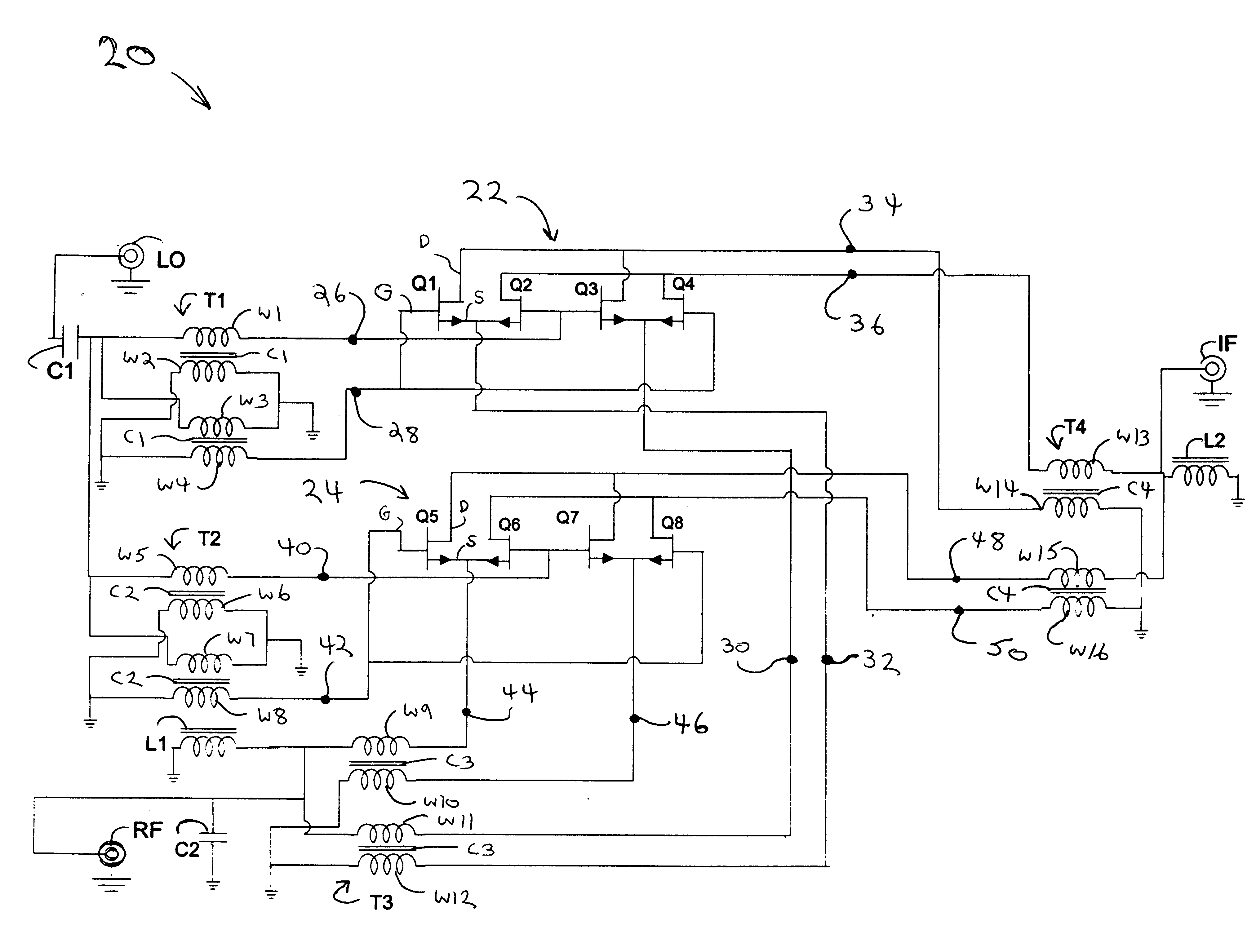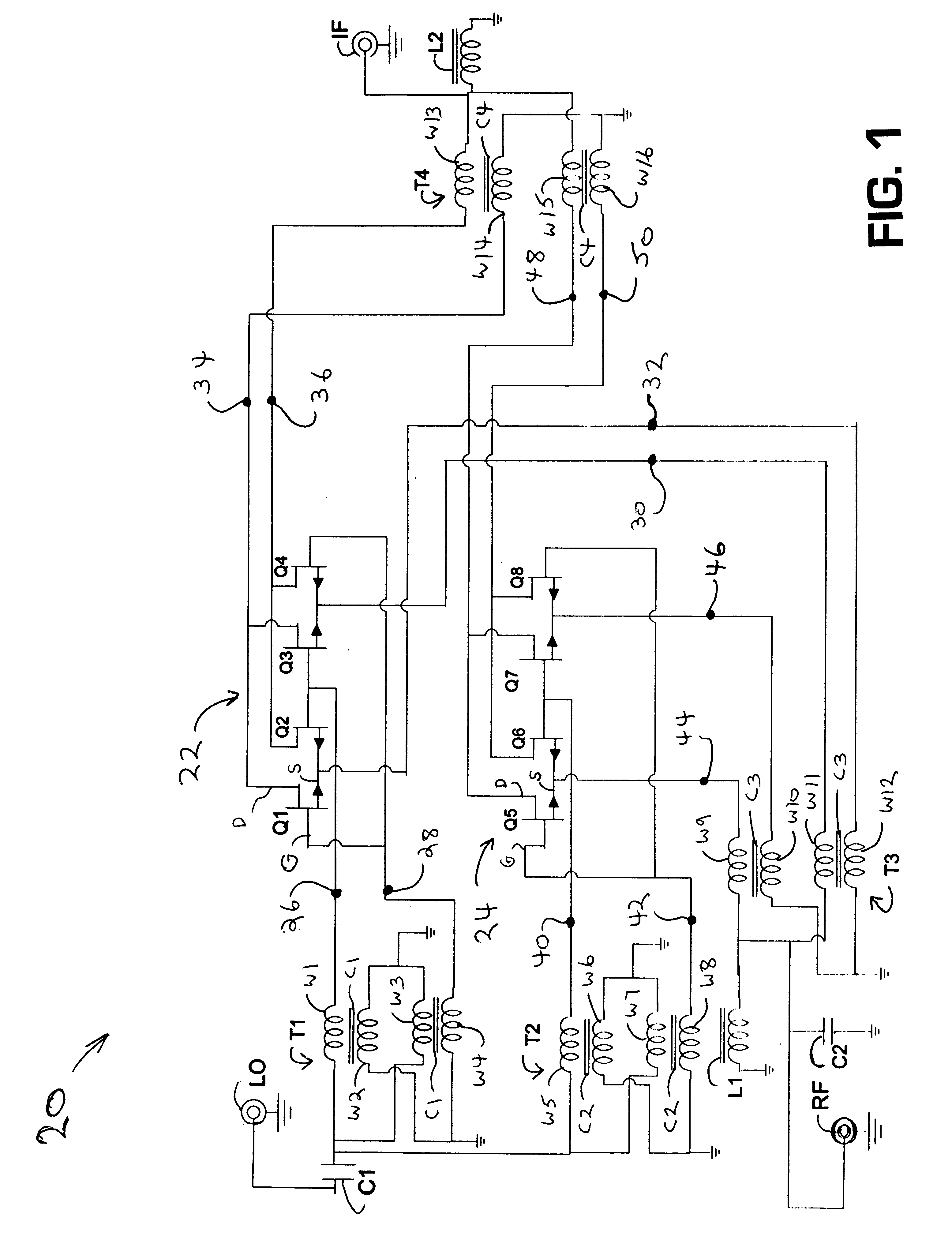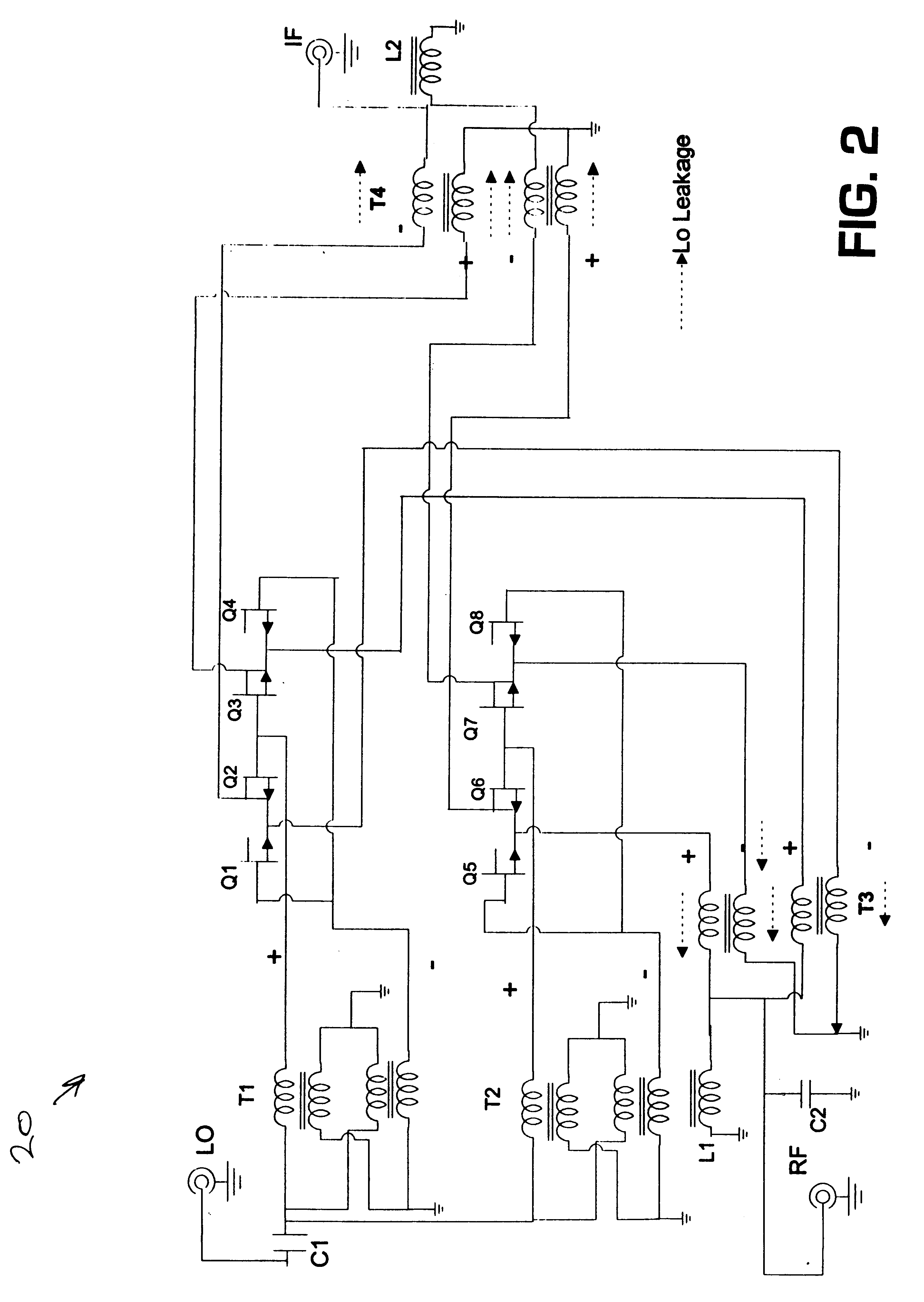Dual double balanced mixer
a double-balanced mixer and mixer technology, applied in the field of mixers, can solve the problems of difficult filtering removal, limited ip3 of mixers with schottky diodes, and lower output ip3
- Summary
- Abstract
- Description
- Claims
- Application Information
AI Technical Summary
Problems solved by technology
Method used
Image
Examples
Embodiment Construction
(s)
Referring to FIG. 1, a schematic view of the preferred embodiment of a Dual Double Balanced Mixer according to the present invention is shown. Dual double balanced mixer 20 has a local oscillator input terminal LO for receiving a local oscillator signal, an RF input terminal RF for receiving an RF signal and an intermediate frequency output terminal IF for providing an intermediate frequency output signal. A first mixer 22 has first and second input ports 26 and 28 for receiving the local oscillator signal and third and a fourth input ports 30 and 32 for receiving the RF signal. The first mixer has first and second output ports 34 and 36 for providing the intermediate frequency signal from the mixer. A second mixer 24 is connected in parallel with mixer 22. Similar to mixer 22, mixer 24 has fifth and sixth input ports 40 and 42 for receiving the local oscillator signal and seventh and eighth input ports 44 and 46 for receiving the RF signal. Mixer 24 has third and fourth output p...
PUM
 Login to View More
Login to View More Abstract
Description
Claims
Application Information
 Login to View More
Login to View More - R&D
- Intellectual Property
- Life Sciences
- Materials
- Tech Scout
- Unparalleled Data Quality
- Higher Quality Content
- 60% Fewer Hallucinations
Browse by: Latest US Patents, China's latest patents, Technical Efficacy Thesaurus, Application Domain, Technology Topic, Popular Technical Reports.
© 2025 PatSnap. All rights reserved.Legal|Privacy policy|Modern Slavery Act Transparency Statement|Sitemap|About US| Contact US: help@patsnap.com



